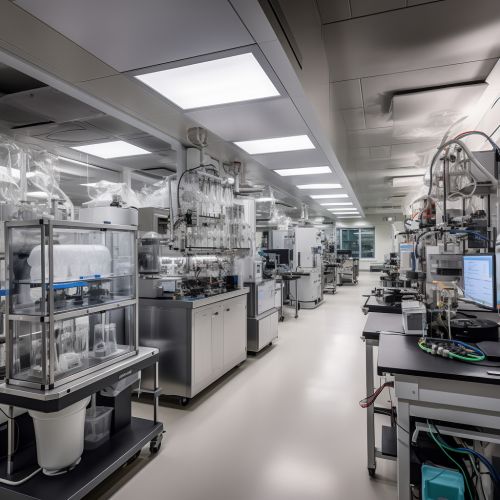Role of Metagenomics in Environmental Microbiology
Introduction
Metagenomics is a rapidly evolving field of study within environmental microbiology that focuses on the genetic material recovered directly from environmental samples. This approach allows for a comprehensive examination of all the microorganisms present in a particular environment, regardless of their ability to be cultured in a laboratory setting. Metagenomics has revolutionized our understanding of microbial diversity and function, and has significant implications for environmental health, biotechnology, and our understanding of life on Earth.


Metagenomics: An Overview
Metagenomics involves the study of genetic material – DNA and RNA – that is directly collected from environmental samples. This is in contrast to traditional microbiology, which often relies on the culturing of individual species in the lab. Metagenomics bypasses this need for culture, allowing scientists to study organisms that are otherwise difficult or impossible to culture. This is particularly important in environmental microbiology, where the vast majority of microbes cannot be cultured using traditional methods.


Techniques in Metagenomics
There are several key techniques used in metagenomics, including DNA extraction, next-generation sequencing, and bioinformatics analysis.
DNA extraction is the first step in metagenomic analysis. This involves the collection of environmental samples, such as soil or water, and the extraction of microbial DNA from these samples. Various methods can be used for this, depending on the type of sample and the specific research goals.
Next-generation sequencing is a method that allows for the rapid sequencing of large amounts of DNA. This technology has been instrumental in the advancement of metagenomics, as it allows for the sequencing of entire microbial communities, rather than just individual species.
Bioinformatics analysis is the final step in metagenomic analysis. This involves the use of computational tools to analyze the vast amounts of data generated by next-generation sequencing. This can include tasks such as identifying the species present in a sample, determining the functional roles of these species, and comparing microbial communities across different samples or environments.


Role of Metagenomics in Environmental Microbiology
Metagenomics has had a profound impact on environmental microbiology, providing new insights into microbial diversity, function, and ecology.
One of the key contributions of metagenomics is its ability to reveal the vast diversity of microbial life. Traditional culture-based methods are only able to culture a small fraction of microbial species, leading to a biased view of microbial diversity. Metagenomics, on the other hand, allows for the study of all microbes in a given environment, providing a more comprehensive view of microbial diversity.
In addition to revealing microbial diversity, metagenomics also provides insights into the functional roles of microbes in the environment. This includes their roles in nutrient cycling, disease transmission, and other ecological processes. This information is critical for understanding and managing environmental health.
Finally, metagenomics allows for the comparison of microbial communities across different environments. This can provide insights into how environmental factors shape microbial communities, and how these communities respond to environmental change.


Applications of Metagenomics
The insights gained from metagenomics have a wide range of applications, from environmental management to biotechnology.
In environmental management, metagenomics can be used to monitor microbial communities and their functions, providing valuable information for the management of environmental health. This can include monitoring the spread of pathogenic microbes, assessing the health of microbial communities, and tracking changes in microbial communities in response to environmental change.
In biotechnology, metagenomics can be used to discover new microbial species and genes with potential industrial applications. This can include the discovery of new enzymes for industrial processes, new antibiotics for medical use, and new species for bioremediation efforts.


Challenges and Future Directions
Despite its many contributions, metagenomics also faces several challenges. These include technical challenges related to DNA extraction and sequencing, as well as computational challenges related to data analysis. Additionally, there are ethical and regulatory challenges related to the use of metagenomic data, particularly in the context of bioprospecting and the patenting of genetic resources.
Looking forward, the field of metagenomics is likely to continue to evolve and expand. Advances in sequencing technology and computational tools will continue to improve our ability to study microbial communities, and the insights gained from metagenomics will continue to inform our understanding of microbial ecology and our ability to manage environmental health.


